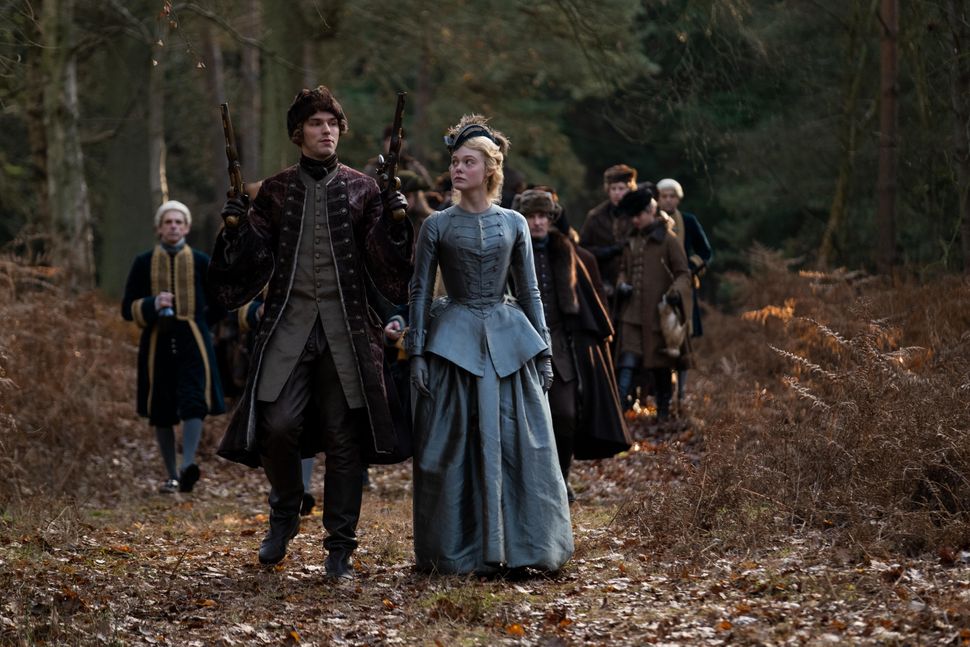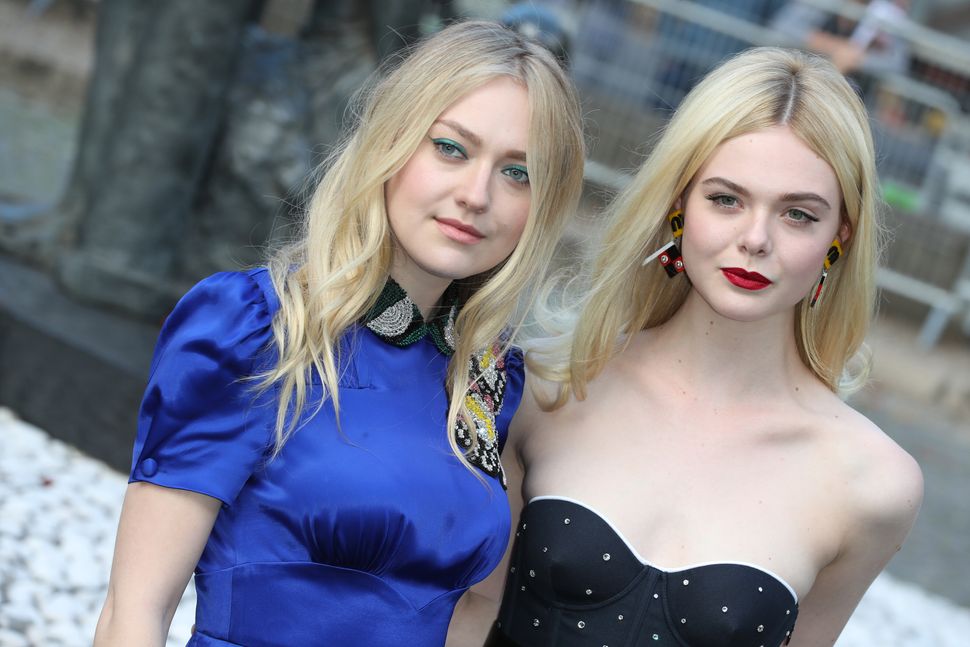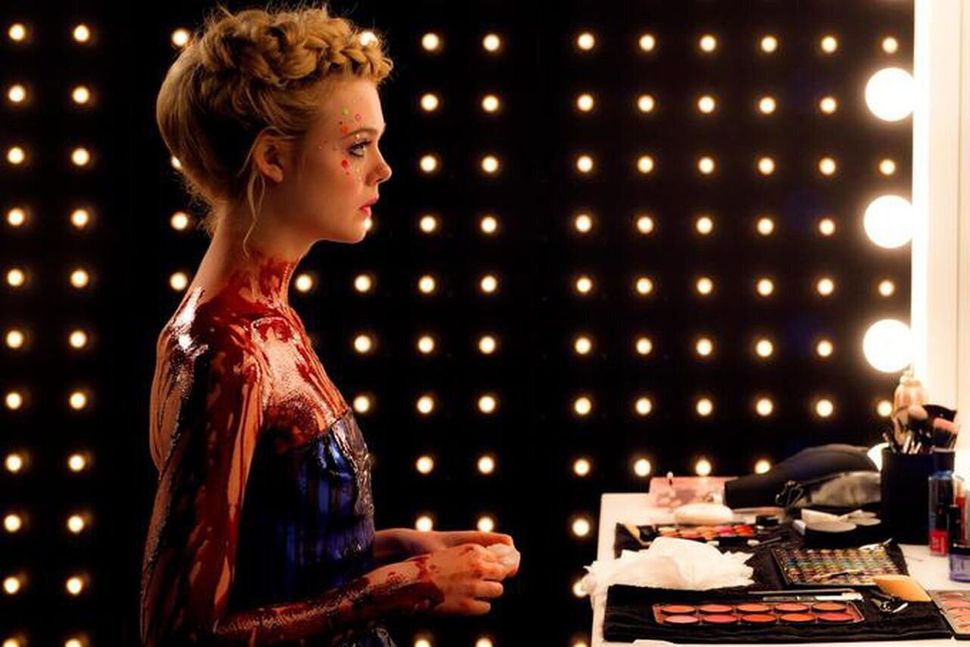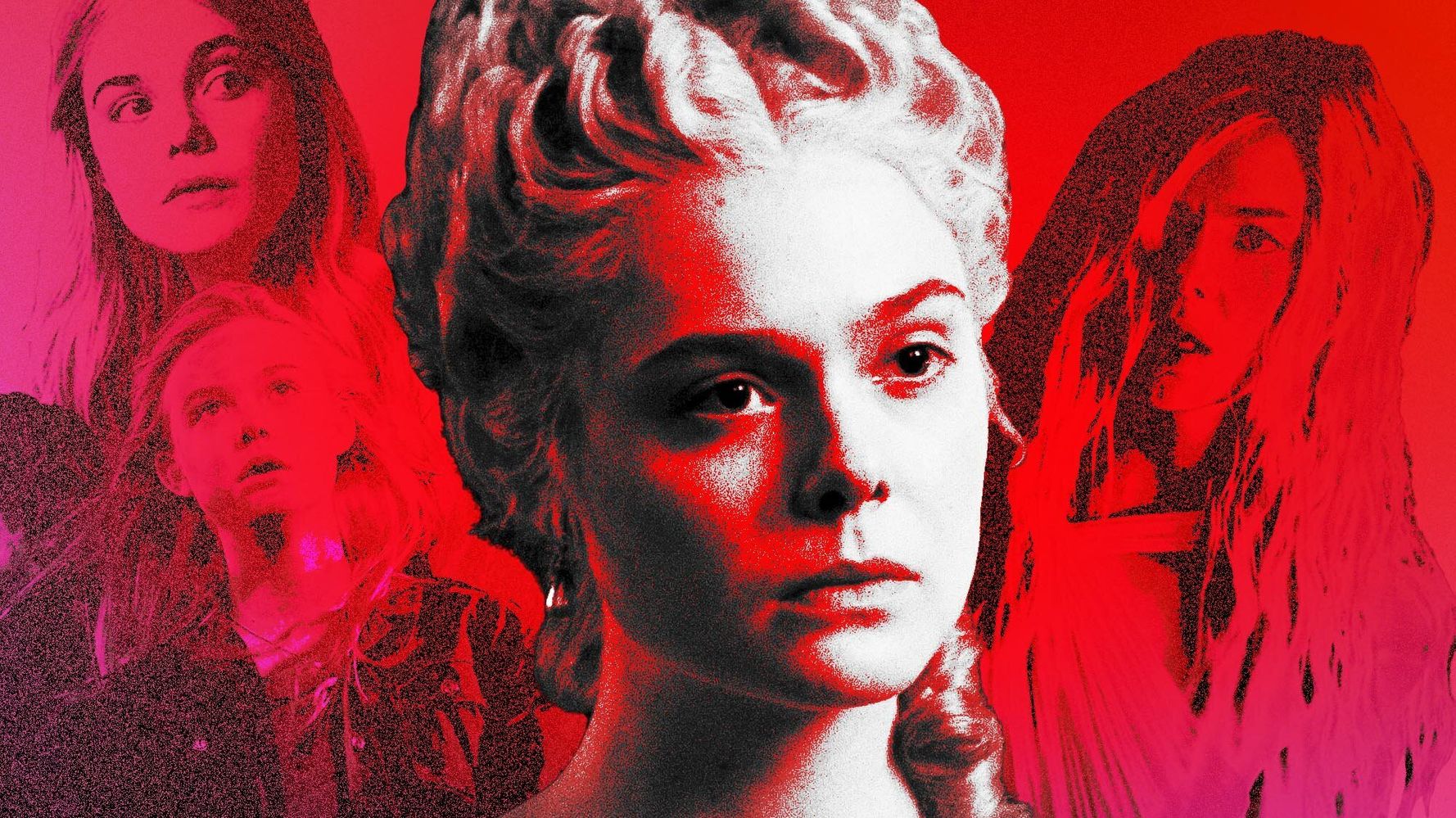[ad_1]
“The Great” is, in many ways, Elle Fanning’s star-making turn.
Sure, she’s been famous for about a decade, but always with the wide-eyed wonder that accompanies youthful renown. When cannibals were eating her in “The Neon Demon,” her mother was stationed nearby on the set, supervising her 17-year-old daughter’s employment. She was there when Fanning dined opposite Brad Pitt in “The Curious Case of Benjamin Button,” ice-skated to Gwen Stefani in “Somewhere,” got alien-abducted in “Super 8,” experienced her first kiss in “Ginger & Rosa,” charmed a devilish Angelina Jolie in “Maleficent” and took a pregnancy test in “20th Century Women.”
Her parents no longer convoy her during shoots, which is probably for the best: “The Great” finds Fanning at her most adult, playing an anachronistic Catherine the Great discovering her own sexual and ideological moxie. Good thing Mom stayed home when it came time for Fanning’s big seduction scene in the second episode of the limited series, which premieres on Hulu this weekend. She was 21 at the time, having gained autonomy after years of consulting her folks on every career move.
“I was just so excited because I knew that I was pushing myself in another direction that I’d really never gone,” Fanning said during a Zoom interview last month. “I feel like I’m someone that loves being under pressure. I love feeling terrified and I thrive in those situations. And this certainly put me in those positions.”

Part of that had to do with the material. “The Great” is a dark comedy, and Fanning had never done comedy before. Tony McNamara wrote eight of the 10 episodes, channelling the same satirical spirit he brought to “The Favourite,” another farce about an 18th-century monarch. Fanning needed to capture the nuances of someone who has come of age without understanding the harshness of the real world. At once naive and headstrong, Catherine arrives in Russia for an arranged marriage to the buffoonish emperor Peter III (Nicholas Hoult). As a woman, she’s entitled to very little power. She can’t even open a library. She’ll have to force her way to the top by manipulating her husband’s intellectual shortcomings.
Fanning’s performance is a delight. She wears on her face a sunny disposition that becomes Catherine’s armor, deployed ever so carefully when encountering snobs and chauvinists, who seem to follow everywhere she goes. Here, Fanning’s toothy grin acts as a disarming mechanism, or perhaps a weapon.
“Doing the pilot, I was definitely trying to find myself and trying to let my guard down,” Fanning said. “I think there’s something with comedy that is so, I don’t know, I get embarrassed. Do I go for it? Do I do the big fall, do I do the crazy face, can I make the weird noise? Do I go there? Because that’s what’s funny. Melissa McCarthy, she’s amazing. There’s something about a real physical comedy that I really wanted to add to Catherine, too. It goes back to Charlie Chaplin. But also I’m not from that world. Slowly, over the course of different takes, it’d be like, you know what, I can slowly creep my toe in and do a little bit more.”
Creeping her toe in is an apt way to describe Fanning’s career ascent. At first, she was best known for being Dakota Fanning’s little sister. When Dakota burst onto the scene in the 2000s with a string of hits that included “I Am Sam,” “Man on Fire” and “War of the Worlds,” the praise she received was breathless. Critics characterized her talents as a once-in-a-generation phenomenon. “One of the most actively employed child actors in the movie business and one of the most gifted, Miss Fanning has both chops and a preternaturally intense screen presence,” The New York Times’ Manhola Dargis wrote in her review of the 2005 horror flick “Hide and Seek.”

That’s a lofty bar for any younger sibling, but as Dakota aged into adulthood (she is 26 now; Elle is 22), the Fannings’ positions reversed. Suddenly it was Elle who was getting the good parts and the proportionate plaudits. She made a David Fincher movie (“Benjamin Button”) before she was old enough to watch David Fincher movies, eventually writing a high-school English essay about what it was like to work with such an obsessive director. (“He did so many takes,” she recalled during our conversation, still sounding exhausted 13 years later.) She was called “the next golden child” — another lofty rank for a fledgling who isn’t yet in the driver’s seat of her lifework. Her résumé is filled with luminaries like Alejandro González Iñárritu (“Babel”), Sofia Coppola (“Somewhere” and “The Beguiled”), Francis Ford Coppola (“Twixt”), J.J. Abrams (“Super 8”), Cameron Crowe (“We Bought a Zoo”), Sally Potter (“Ginger & Rosa” and “The Roads Not Taken”) and Mélanie Laurent (“Galveston”).
Having parents so devoted to aiding her craft paid off, which can’t be said for every young star. As she tells it, Elle and Dakota fell into a groove — they don’t talk about work much, so it never became too competitive. (They’re self-isolating together amid the COVID-19 pandemic, bingeing “Vanderpump Rules,” “90 Day Fiancé” and “MasterChef Junior.”)
Around age 16, she started to advocate for roles that were edgy and ambitious, like 2016’s trippy “Neon Demon,” in which Fanning plays an aspiring model adrift in the Los Angeles beauty industry’s superficiality. That’s the one with the cannibalism. Directed by Danish provocateur Nicolas Winding Refn, “Demon” is the type of project that gave people in Fanning’s inner circle pause.
“That was definitely a turning point in my career,” she said. “It’s a polarizing movie. It’s not necessarily like, ‘Oh yeah, this is a winner, everyone’s going to love this one.’ But I also think that I really pushed everyone around me. I mean, maybe my mom, but also managers and agents. It’s an art film. It’s different, and I get eaten at the end. They said, ‘OK, is this what we want? Let’s think about this. Take it slow. Let’s look at the options here.’ Whereas I kind of didn’t need to think about it. Maybe that surprises people, but I always like to surprise people. I like the shock factor of it.”

Everyone has a love-and-hate relationship with their teenage years. Fanning’s were documented for public consumption, but she doesn’t seem to mind, likening her movies to “baby albums.” Her healthy relationship with herself and her family has given Fanning a sense of how to age in a business that sometimes discards child stars. In the four years between “The Neon Demon” and “The Great,” newfound maturity became Fanning’s brand, reflected in her screen roles and her red-carpet style.
“I don’t want to play just a strong female character,” Fanning said, employing a shortsighted phrase that’s trendy within Hollywood. “That actually seems boring. It’s so much more complicated than that. There’s this stigma of every woman has to look a certain way in films. Oh, you have to smile, or that’s too silly, or that’s not likable enough. As I’ve gotten older, I’ve realized I can fight against that a little bit. Because starting out, when you’re young, you’re going to get what you’re going to get because you’re auditioning. I didn’t really have the choice to choose what I got to play until now. Scripts come and I get to say, ‘No, that’s just her in a bikini, no thanks.’ Or a script will say, ‘She’s beautiful and doesn’t know it.’ That’s just automatically, ‘I don’t really want to play that part.’”
Soon, the Fanning sisters’ professional paths will intersect, and they may be forced to discuss their showbiz experiences. Having never shared scenes together, they’re set to headline “The Nightingale,” a war drama based on Kristin Hannah’s bestselling novel from 2015.
“We now are actually meshing our worlds when we’ve actually heard from a lot of people that we work very differently,” Fanning said. “I don’t know. We’ll see. It’ll be fun. We’re going to be looking at each other in a different way, for sure.”
Calling all HuffPost superfans!
Sign up for membership to become a founding member and help shape HuffPost’s next chapter
[ad_2]
Source link

